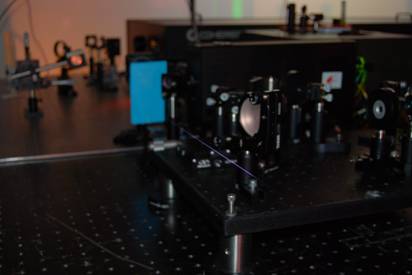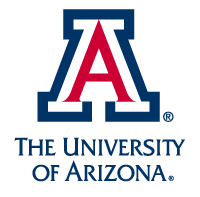Introduction
From October of 2007, the ACMS research program on femtosecond light strings includes an experimental component. These experiments are conducted in a new Terawatt laser facility collocated with the ACMS at the College of Optical Sciences, University of Arizona. The experimental facility is equipped with a 35mJ femtosecond laser system, high-energy Optical Parametric Amplifier (OPA) and various pieces of equipment for pulse and beam shaping and diagnostics.
Experiment
The major experimental activity in the ACMS lab involves studies of how beam and pulse shaping affect the formation and dynamics of light-strings in various gaseous and condensed media. Two particular beam shapes that have been extensively investigated so far are Bessel and Airy beams. The diffraction-free propagation of femtosecond Bessel beams allows for the creation of extended plasma channels in air. These extended filaments can be used for the generation of energetic optical pulses with the duration in the few-cycle range. In the case of filamentation of femtosecond Airy beams, the self-bending property of these beams allows for the creation of curved filaments.
This is a new regime of the intense laser-pulse propagation in which the linear self-bending property of the beam competes against the nonlinear self-channeling. The bent filaments generated by ultra-intense Airy beams emit forward-propagating broadband radiation. Analysis of the spatial and spectral distribution of this emission provides for a valuable tool for analyzing the evolution of the ultra-intense optical pulse along the optical path.
Plasma Channel

Photograph of a weakly fluorescent plasma channel left in the wake of an ultra-intense and ultra-short laser pulse. The image was created by integrating approximately 20 laser pulses.
Burn Pattern

Burn pattern produced by an ultra-intense self-bending Airy beam on aluminum foil inserted into the beam path shortly after the Airy beam pattern is formed. Center: Same after about 35 centimeters of propagation.
In addition to the beam self-bending, the beam pattern exhibits a complex nonlinear reshaping on propagation. Right: Numerical simulation accurately reproduces the major features of the beam reshaping.
Angularly resolved spectra

Angularly resolved spectra of emission by a curved laser filament in water.
Left: The complete emission pattern is composed of stacked-up and vertically shifted individual patterns originating from different points along the beam path.
Center: Emission pattern originating from the beginning section of the filament. This pattern indicates that a pulse-splitting event has occurred in which the trailing sub-pulse is the dominant one.
Right: Emission pattern originating from the end section of the filament. This pattern is representative of a pulse-splitting event in which the leading sub-pulse is the strongest
References
- P. Polynkin, M. Kolesik, A. Roberts, D. Faccio, P. DiTrapani, J. Moloney, "Generation of extended plasma cannels in air using femtosecond Bessel beams“, Opt. Express, vol. 16, p. 15733 (2008)
- P. Polynkin, M. Kolesik, J. Moloney, "Extended filamentation with temporally chirped femtosecond Bessel-Gauss beams in air”, Opt. Exp., vol. 17, p. 575 (2009)
- P. Polynkin, M. Kolesik, J. Moloney, G. Siviloglou, D. Christodoulides, “Curved plasma channel generation using ultraintense Airy beams”, Science, vol. 324, p. 229 (2009)
- P. Polynkin, M. Koleisk, J. Moloney, “Filamentation of femtosecond laser Airy beams in water”, Phys. Rev. Lett., vol. 103, p. 123902 (2009)
|



